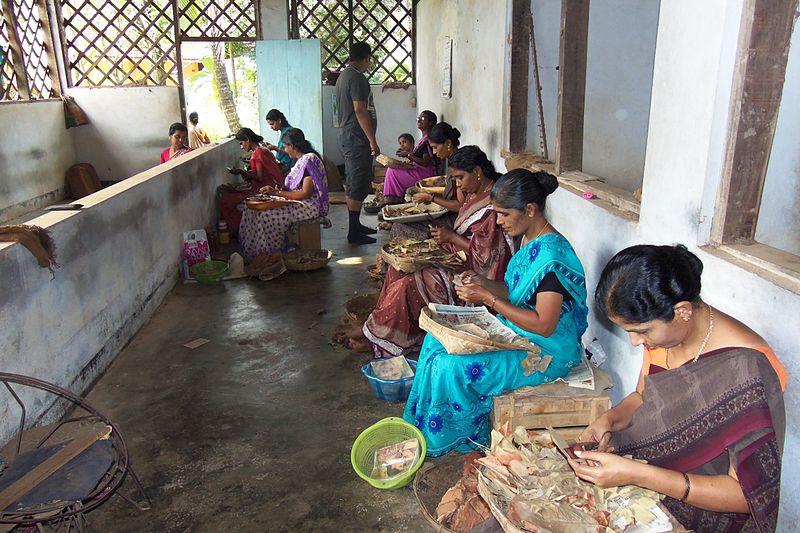Closing the employment gap between men and women — a whopping 58 percentage points — could expand India’s GDP by close to a third by 2050. That equates to nearly $6 trillion in constant US dollar terms, according to a recent analysis from Bloomberg Economics
The forecast is particularly bleak in developing countries like India, where female labor force participation fell so steeply that it’s now in the same league as war-torn Yemen
As infections surged, a bad situation turned dire: Economists in Mumbai estimate that female employment plummeted to 9% by 2022
NEW DELHI:
For years, Sanchuri Bhuniya fought her parents’ pleas to settle down. She wanted to travel and earn money — not become a housewife.
So in 2019, Bhuniya snuck out of her isolated village in eastern India. She took a train hundreds of miles south to the city of Bengaluru and found work in a garment factory earning $120 a month. The job liberated her. “I ran away,” she said. “That’s the only way I was able to go.”
That life of financial freedom ended abruptly with the arrival of Covid-19. In 2020, Prime Minister Narendra Modi declared a nationwide lockdown to curb infections, shutting almost all businesses.
Within a few weeks, more than 100 million Indians lost their jobs, including Bhuniya, who was forced to return to her village and never found another stable employer.
As the world climbs out of the pandemic, economists warn of a troubling data point: Failing to restore jobs for women — who have been less likely than men to return to the workforce — could shave trillions of dollars off global economic growth.
The forecast is particularly bleak in developing countries like India, where female labor force participation fell so steeply that it’s now in the same league as war-torn Yemen.
This week’s episode of The Pay Check podcast explores how the coronavirus accelerated an already worrying trend in the world’s second-most populous country.
Between 2010 and 2020, the number of working women in India dropped from 26% to 19%, according to data compiled by the World Bank.
As infections surged, a bad situation turned dire: Economists in Mumbai estimate that female employment plummeted to 9% by 2022.
This is disastrous news for India’s economy, which had started slowing before the pandemic.
Modi has prioritized job creation, pressing the country to strive for Amrit Kaal, a golden era of growth. But his administration has made little progress in improving prospects for working women.
That’s especially true in rural areas, where more than two-thirds of India’s 1.3 billion people live, conservative mores reign and jobs have been evaporating for years.
Despite the nation’s rapid economic expansion, women have struggled to make the transition to working in urban centers.
Closing the employment gap between men and women — a whopping 58 percentage points — could expand India’s GDP by close to a third by 2050. That equates to nearly $6 trillion in constant US dollar terms, according to a recent analysis from Bloomberg Economics.
Doing nothing threatens to derail the country on its quest to become a competitive producer for global markets. Though women in India represent 48% of the population, they contribute only around 17% of GDP compared to 40% in China.
India is an extreme illustration of a global phenomenon. Across the world, women were more likely than men to lose jobs during the pandemic, and their recovery has been slower. Policy changes that address gender disparities and boost the number of working women — improved access to education, child care, or flexible work arrangements, for example — would help add about $20 trillion to global GDP by 2050, according to Bloomberg Economics.
For workers like Bhuniya, 23, the pandemic had heavy consequences. After losing her job, she struggled to afford food in Bengaluru and eventually returned to her remote village, Patrapali, in the state of Odisha. Bhuniya doesn’t think she’ll have another opportunity to leave. She no longer earns a steady income, but her family worries about her safety as a single woman living in a distant city.
“If I run away again, my mother will curse me,” said Bhuniya. “Now, there’s nothing left. My account is empty and there’s little work in the village.”
The story echoes across India. During the pandemic, Rosa Abraham, an economics professor at Azim Premji University in Bengaluru, tracked more than 20,000 people as they navigated the labor market. She found that after the first lockdown, women were several times more likely to lose their jobs than men and far less likely to recover work after restrictions were lifted.
Increased domestic duties, lack of childcare options after school shutdowns, and a surge in marriages — which often confine women’s autonomy in India — help explain the difference in the outcome.
“When men are faced with this kind of a huge economic shock, then they have a fallback option,” Abraham said. “They can navigate to different kinds of work. But for women, there is no such fallback option. They can’t negotiate the labor market as effectively as men do.”
Dreams of freedom or a well-paid office job were replaced with what she called “distress-led employment,” essentially unpaid work on a family farm or taking care of the home. Prior to the pandemic, Indian women already performed about 10 times more care work than men, around three times the global average.

